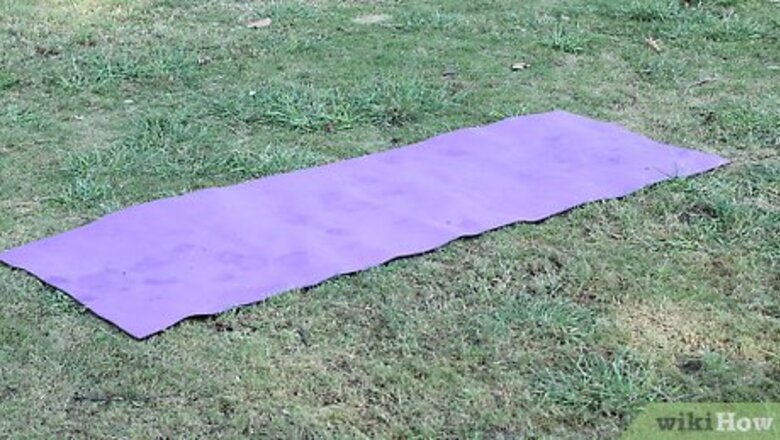
views
Doing a Basic Somersault
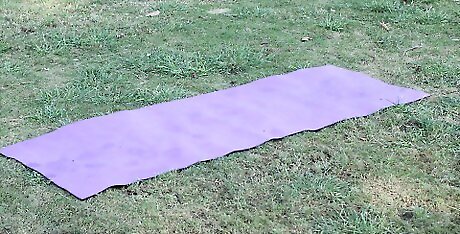
Find a comfortable floor. You should use a comfortable mat, a gym floor at your gymnastics school, or a floor with some cushion to do a somersault. If you use a hard surface, such as a wooden floor, then you're more likely to injure your head and neck.
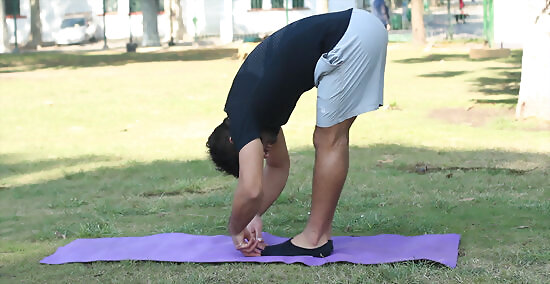
Stretch well. You should stretch before you perform any gymnastics skill. For the somersault, there are a few key parts of your body that should be stretched well before you begin so you don't sprain a muscle or hurt yourself. Here's what you should do: The pike stretch. Sit down with your legs straight out and reach forward toward your ankles with your arms to get a deep stretch in the back of your thighs and calves, as well as in your back. The ankle roll. Sit down and hold on to the place just above your ankle and roll it a few times in one direction, then the other. Repeat with your other ankle. The wrist stretch. Get on your hands and knees and put down your hands so that your fingers are facing your legs, not away from them. Move back and forth slightly with your palms down, and then flip your hands so that your palms are facing up while your fingers are still pointed toward your feet. The neck stretch. Move your head from left to right and then up and down like you're nodding. Finish the neck stretch by rolling your head clockwise a few times, and then counter-clockwise.
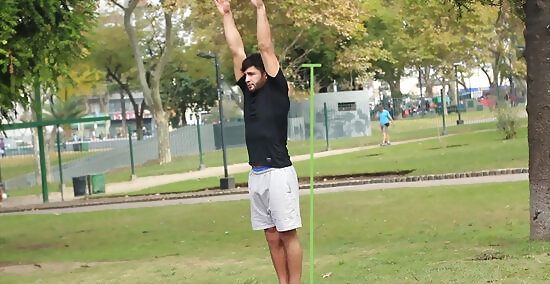
Stand with a straight body. Stand straight up with your hands reaching up and your arms by your ears. Your palms should be facing out, slightly to each side. Your legs should be close together and there should be a slight arch in your back, with your head facing straight ahead of you. This is a classic beginning stance in gymnastics. If you feel more comfortable starting on the ground, however, you can skip this starting position and move straight to the floor.
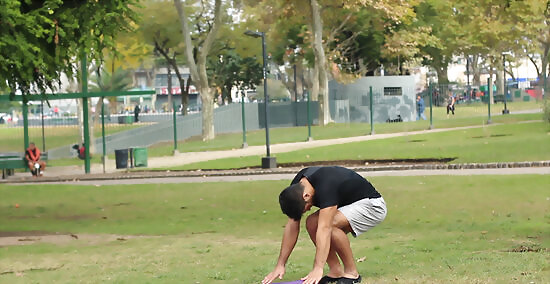
Crouch down. Tuck your legs and place your hands on either side of your feet, facing forward and several inches in front of each foot. Your chest should be resting on your thighs. Round your back and put your head down so that you're looking at your belly button. Remember that your head should never touch the ground in a somersault; holding this position will help keep your head above the ground. You'll actually be landing on your upper back, not on any part of your head.
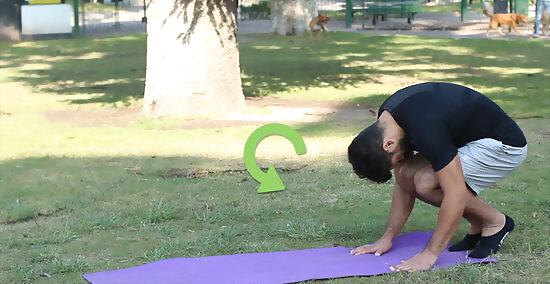
Push off through your legs. Lean forward as you push off through your feet and legs and make your hips come up over your head while your hands stay on the ground. Your arms and legs should be straight while still being a little bit bent as you roll forward and land on your back.
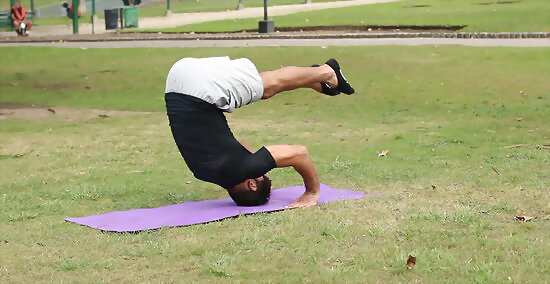
Continue to roll forward. Remember that your head and neck should never touch the ground; as you continue to roll, your upper back will touch the ground first as you roll onto the rest of your back before you come up. As you roll, keep your shoulders straight and even; if one shoulder moves before the other, you could hurt yourself and won't land the somersault in a straight position. No jumping is necessary to do a somersault -- in fact, this could cause injury -- all you need is to roll forward using the momentum generated by your legs. Follow through. Your legs should be tucked as you finish the somersault, and you should land on your feet with your arms straight out in front of you.
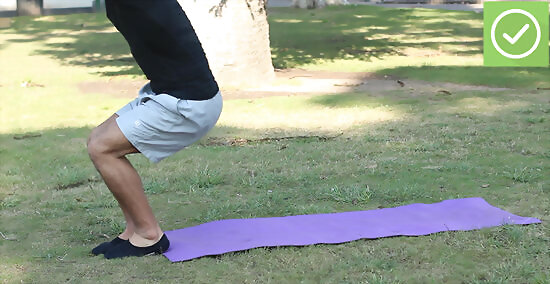
Stand up. To finish the somersault, you should roll onto your feet and use your momentum to stand straight up, with your arms all the way up and your body straight once more.
Trying Advanced Variations
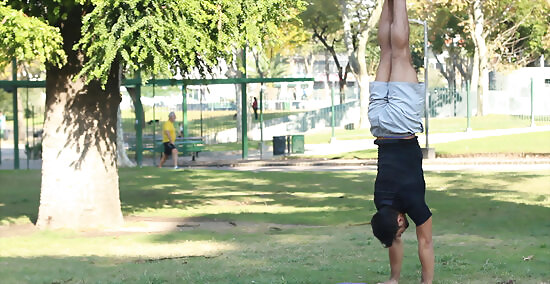
Try a handstand somersault. This advanced move is a combination of a handstand and a somersault. Start with your legs spaced shoulder-width apart and your body straight. Do a handstand and pause for a moment while your legs are straight in the air. Keeping your legs together, bend your arms and lower your body toward the ground, then tuck in your chin and do a somersault. Finish in standing position with your hands over your head. Since this move is rather difficult, you might want to try it with a spotter the first few times. Be extra careful to tuck in your chin so that your head doesn't touch the ground at any time. Do partial pull-ups to help build your serratus and intercostal muscles so handstands are easier for you do to.
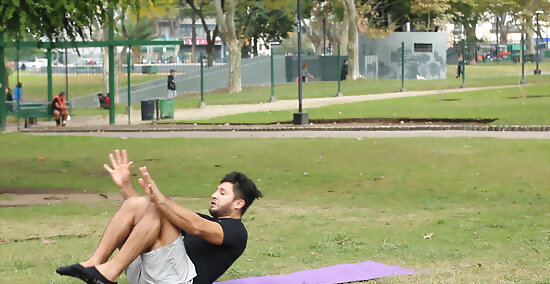
Do a somersault kip-up. This move is special because of the landing, which looks similar to a back handspring landing. Do a regular somersault, but instead of simply standing up, jump with both feet into a standing position. You'll need to do a fast somersault to get up enough momentum. Use your hands to help propel your body as you jump, then land on your feet and straighten your body with your arms above your head.
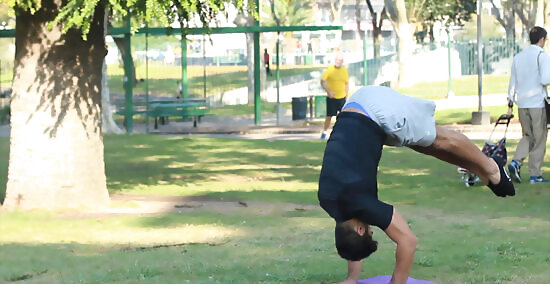
Do a dive somersault. If you really want to impress your friends, try this impressive variation on the basic somersault. Instead of starting in a fixed position, you run and then dive into the roll. Do a short headfirst dive, as though you were diving over a low log. Land on your hands, tuck in your head and immediately launch into a somersault. Move swiftly to your feet and finish with your body straight and your hands stretched over your head. Don't attempt this move until you've completely mastered the somersault, handstand, front handspring and other advanced moves. Once you get the hang of it, you can start making bigger dives.


















Comments
0 comment